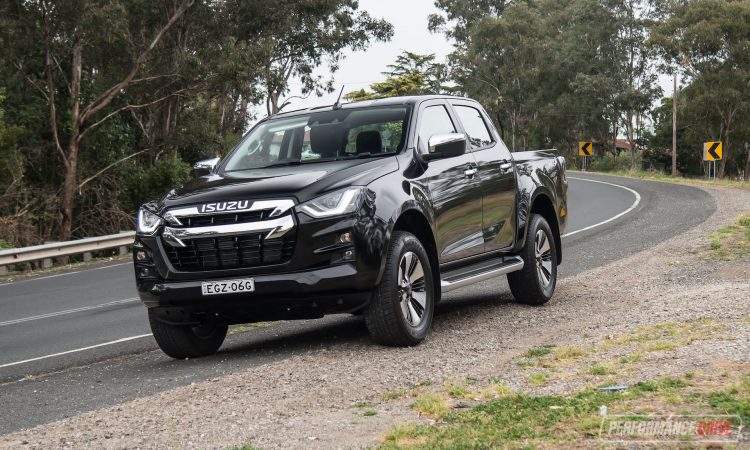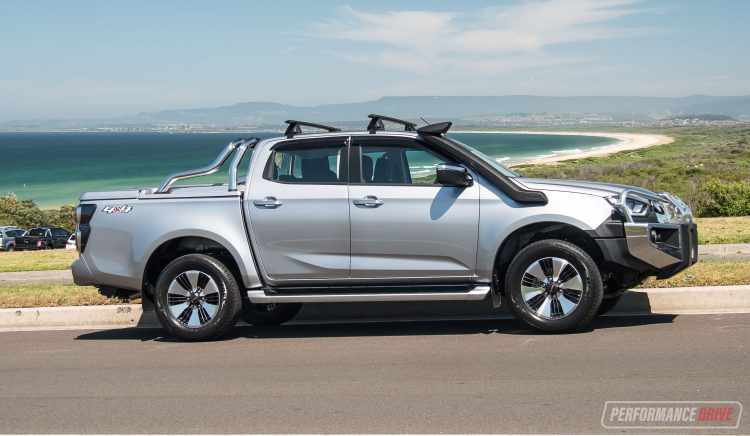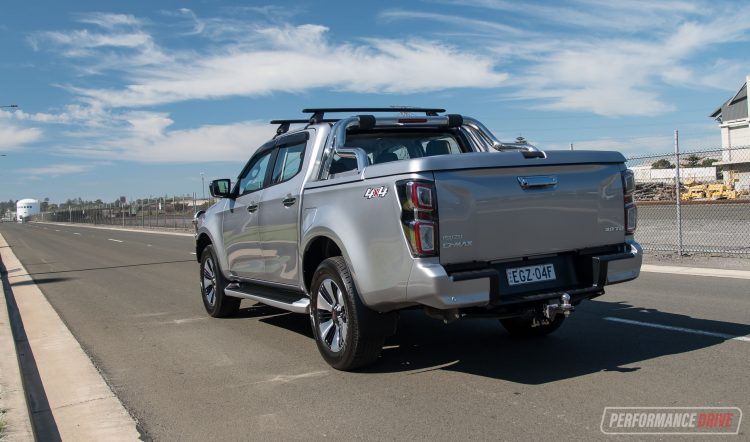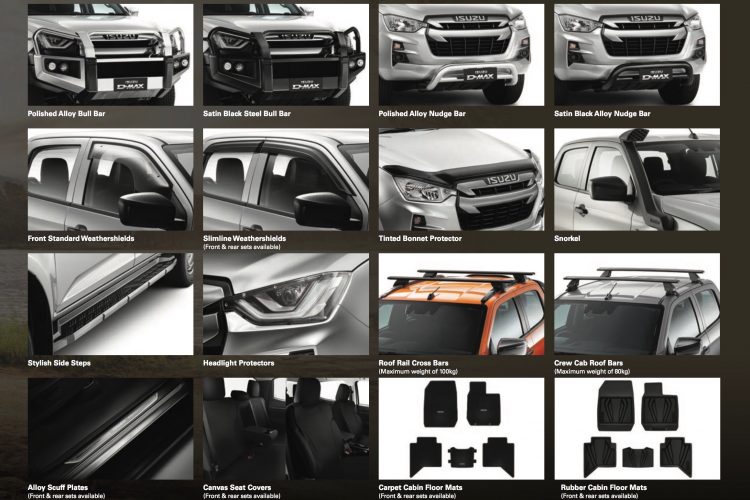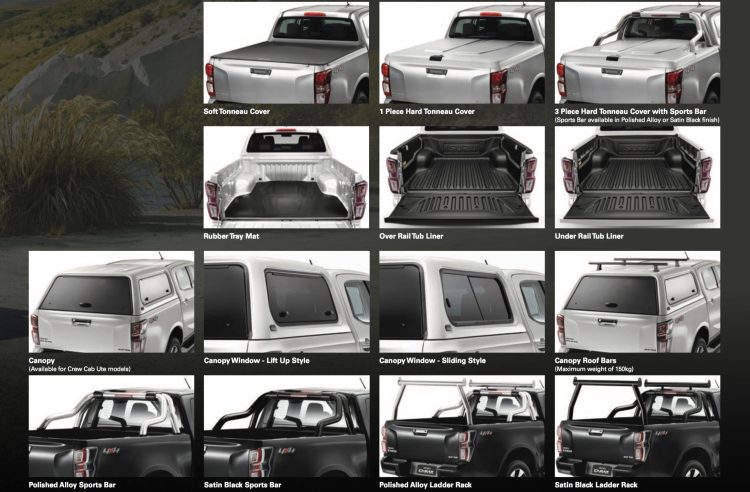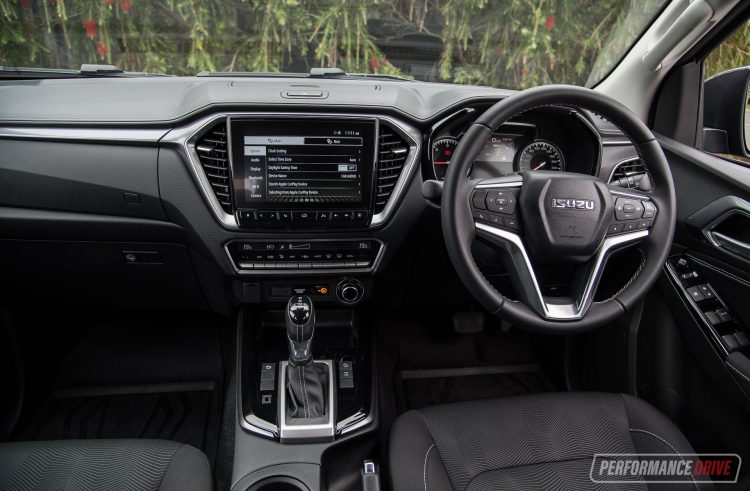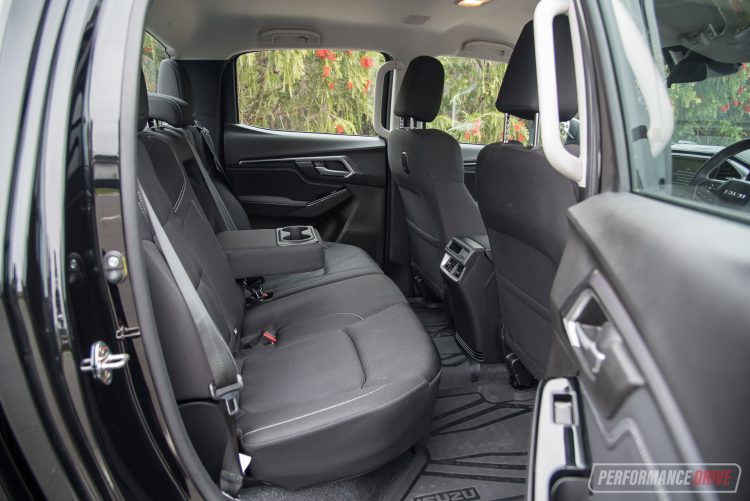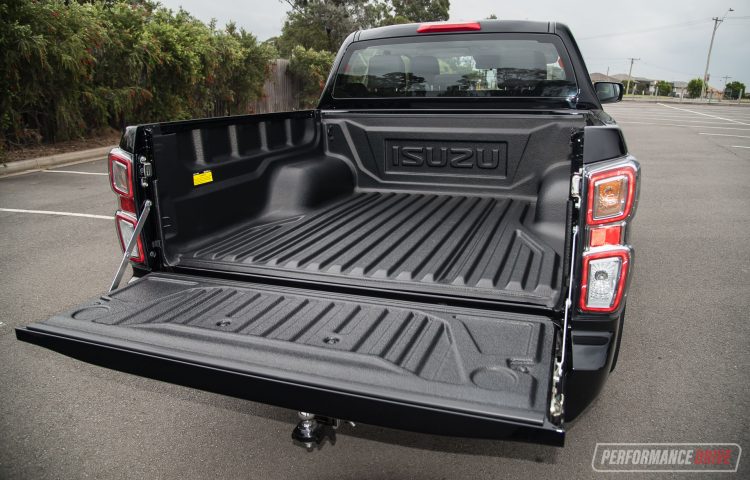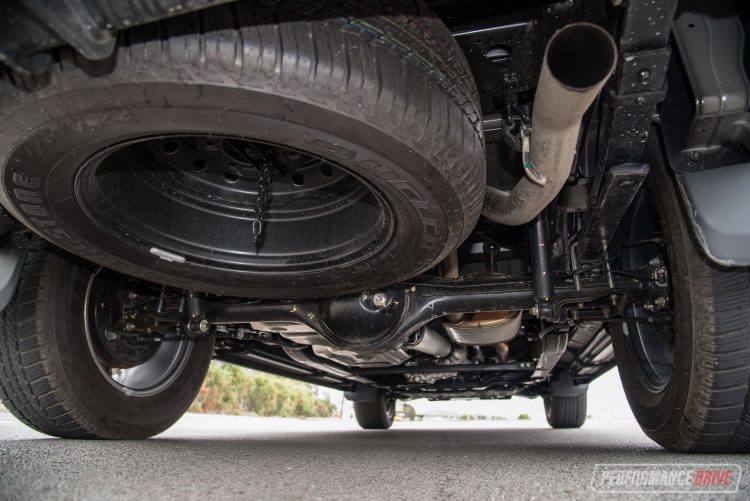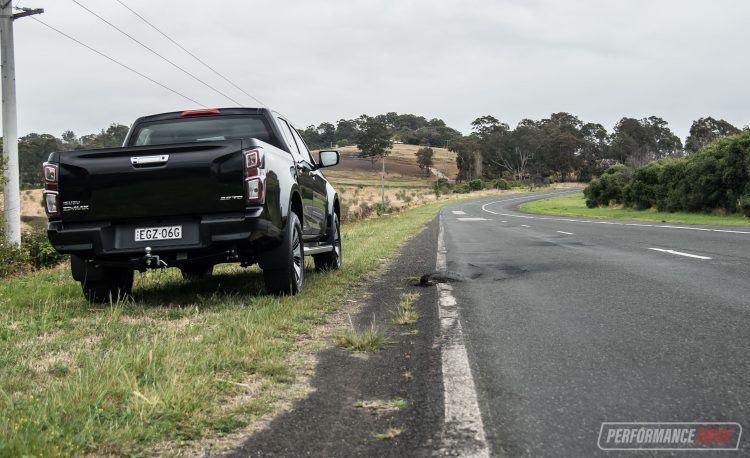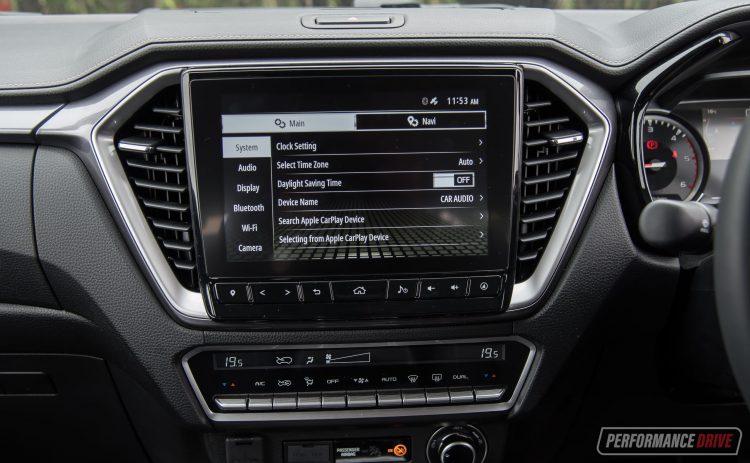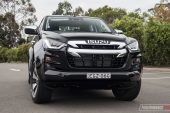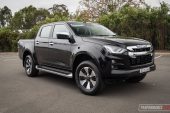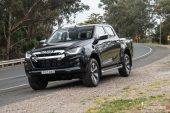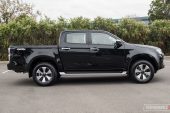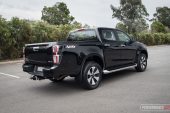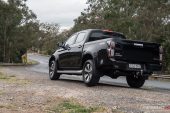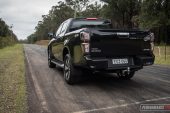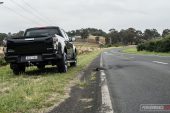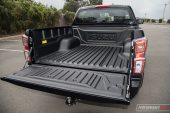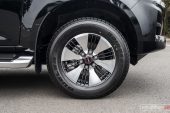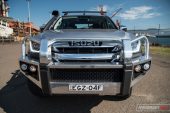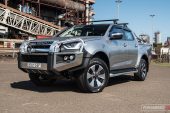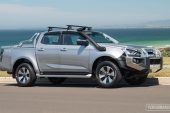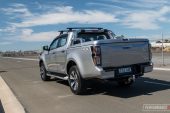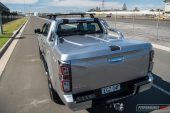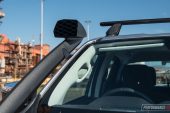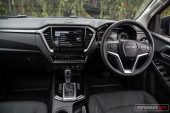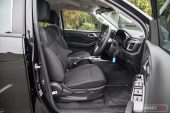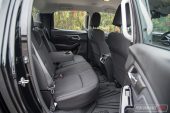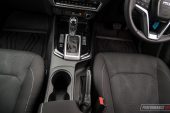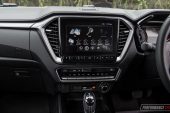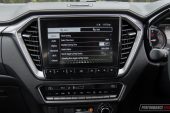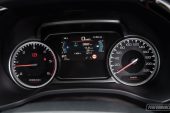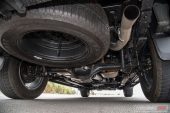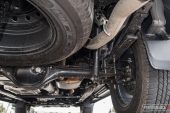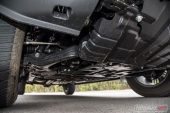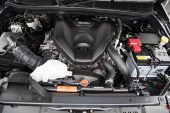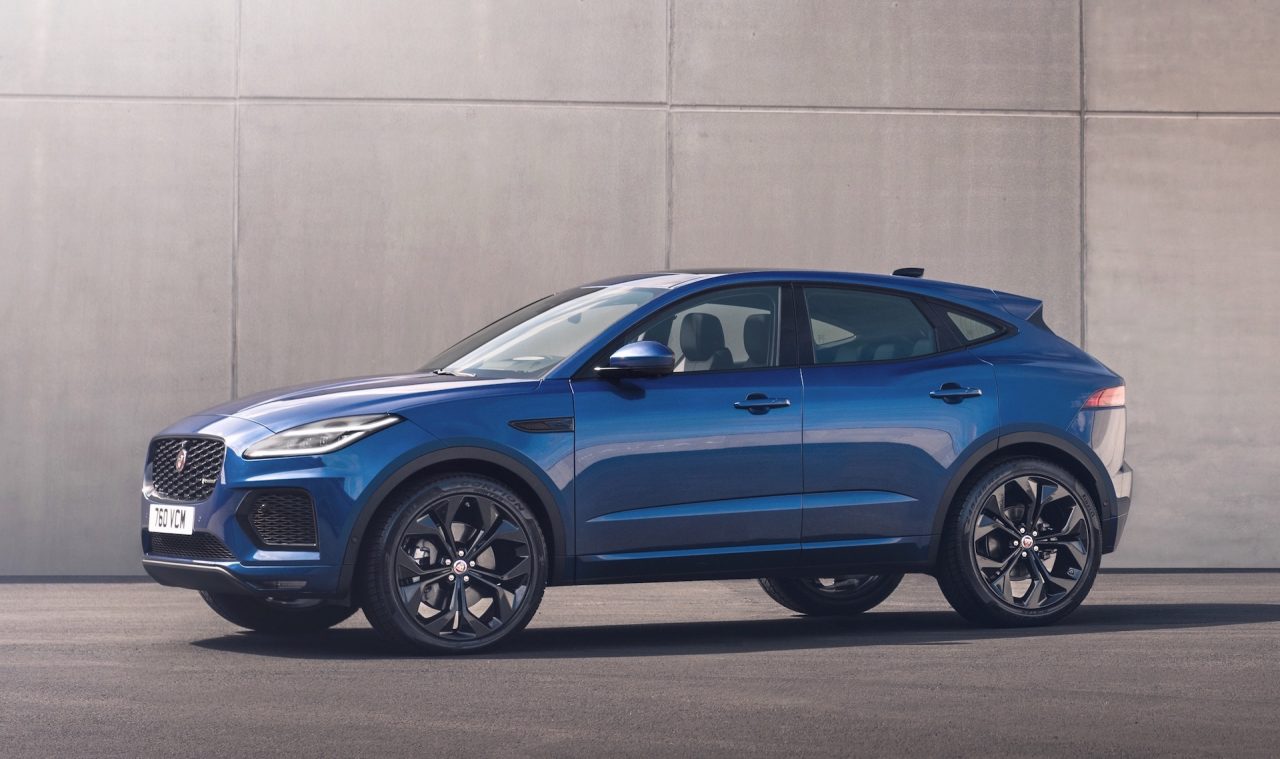This is the 2021 Isuzu D-Max. It’s all new, featuring massive improvements in safety, accommodation, and on-board entertainment and refinement compared to the predecessor. Let’s take a closer look and see if it has a real potential to become one of the top three best-selling utes in Australia.
So far this year (through September), Isuzu has sold 8626 examples of the D-Max, according to VFACTS new vehicle registration figures. That puts it in fourth place overall, behind the Toyota HiLux (30,122), Ford Ranger (28,231), and Mitsubishi Triton (14,062), in terms of 4×2 and 4×4 combined sales. This new model could see it push very close to the Triton for third place, or beyond.
Isuzu officially launched the new D-Max on September 1. It joined the market just after Toyota decided to lob its freshened up HiLux, and ahead of the new Mazda BT-50 which actually shares all of the D-Max’s underpinnings, powertrain and most of the hardware.
Prices have climbed for most variants, which is probably understandable considering the increased levels of technology and equipment being presented. For this review we’re checking out the LS-U dual-cab 4×4 auto, which starts from $56,900. That’s up $6000 on the equivalent LS-U predecessor.
Isuzu gave us two LS-U examples to test, including one that showcases some of the genuine accessories that are available (silver vehicle pictured). We will also be testing the base SX single-cab and top X-Terrain in separate reviews very soon.
2021 Isuzu D-Max LS-U – THE SPECS
[column width=”47%” padding=”6%”]Engine: 3.0-litre turbo-diesel four-cylinder
Output: 140kW@3600rpm / 450Nm@1600-2600rpm
Transmission: Six-speed auto
Drive type: Part-time RWD/4WD, rear diff lock
Wheels: F & R: 18×7.5, 265/60
ANCAP: Five stars
Kerb weight: 2045kg
Power-to-weight: 14.60:1 (kg:kW)
Official fuel economy: 8.0L/100km
Economy during test: 10.2L/100km
Fuel capacity/Type: 76L/Diesel[/column] [column width=”47%” padding=”0″]Power efficiency: 17.5kW:L/100km
0-60km/h: 4.07 seconds*
0-100km/h: 9.75 seconds*
60-110km/h: 7.61 seconds*
1/4 mile: 16.94 seconds at 133.2km/h*
Max acceleration: 0.736g
100-0km/h braking: 3.33 seconds at 41.43 metres*
Max deceleration: -1.078g
Decibel at idle: 48*
Peak decibel at 60-100km/h: 79*
Priced from: $56,900[/column][end_columns]
* Figures as tested by PerformanceDrive on the day. Factory claims may be different
2021 Isuzu D-Max LS-U – THE PACKAGE
Firstly, the design. Isuzu has managed to blend modernity and muscularity in ideal form, in our opinion. We like the curvy wheel arches and the strong character lines that run down the side, while the new front end looks sophisticated and smart. Especially with the new-look headlights and integrated daytime running lights.
As demonstrated by this silver test vehicle, Isuzu offers a number of genuine accessories, which all seem to blend well with underlying styling. Buyers can opt for a nudge bar at the front or a fully-formed bull bar made from either steel (in black) or polished alloy as shown here. Headlight protectors, a bonnet protector, and full-size and slim weathershields for the side windows are also available.
Around at the back the pickup style models (aka body back) can be had with either a soft tonneau cover, a single-piece hardcover, or a three-piece hardcover when fitted with the sports bar. There’s also a rubber mat for the tray floor, or under-rail or over-rail tub-liners available. A number of different canopies can also be specified, including roof bars that offer a 150kg load capacity.
For us, the interior is the most impressive aspect of the overall packaging. Not only is it a big leap forward in terms of ergonomics, refinement and equipment, it’s also presented very competitively against the rivals. There’s a good mix of durable and hard-wearing surfaces and materials, but then, the important touch points and comfort areas are nicely detailed.
Isuzu has finally introduced a fully adjustable steering column. We’re not sure why some utes have excluded this fundamental function for so long, but it’s great to see Isuzu has made the switch. This means you can move the steering column up and down, and in and out. And the adjustment spectrum is broad, allowing you to pull the steering wheel right out to your chest if needed (for shorter individuals such as me), or move the wheel right up or down.
As a result, the driving position feels very natural and car-like. You get a commanding view with clear visibility through the front and side windows. Seating space is also commendable, with ample headroom and legroom in the front. Rear seat space is at least better than average, although, most dual-cab utes now offer plenty of room. The backrest isn’t completely vertical either, like it used to be in earlier dual-cab models. Isuzu has fit not only adjustable climate vents in the back, but also a power socket complete with a pocket for your phone while it’s charging.
Both the LS-U and X-Terrain come with Isuzu’s all-new 9.0-inch touch-screen on the dash. This brings in some of the modern tech and connectivity that the D-Max has long been missing. Such as, Android Auto and Apple CarPlay. It also displays the rear-view camera. Dual-zone climate control is standard on the LS-U and up, and there’s a leather-wrapped steering wheel and carpet flooring.
As for the tray, the length for the dual-cab models is 1570mm, and 1530mm wide, with 1122mm between the wheel arches. The tub is 490mm deep, and the payload of the auto is 1055kg. Compared with the main rivals, the Toyota HiLux and Ford Ranger, the D-Max shapes up well.
For reference, the Ford Ranger XLT dual-cab tray is 1549mm long, 1560mm wide, with 1139mm between the arches. The tub is 511mm deep, and offers a payload of 1003kg in auto form. We couldn’t find tray dimensions for the HiLux dual-cab, including looking in Toyota’s press portal, Redbook and on the official website. However, the payload capacity for the auto SR and SR5 is 995kg.
In terms of the chassis and construction, the new model is made with ultra high-tensile steel for added strength, and additional cross members have been installed to further improve durability. An independent front suspension setup remains as before, but with high upper control arms to improve handling and comfort, while a live axle remains at the back.
The long-span leaf springs are made using warm-stress shot-peening methods to increase their strength and flexibility. Improvements are also made to the body and mounting points so overall the new D-Max is stronger than ever, but also promises to be more comfortable.
2021 Isuzu D-Max LS-U – THE DRIVE
It is still a 3.0-litre turbo-diesel four-cylinder engine – which should keep traditionalists happy – but it’s actually almost all new. The codename is now 4JJ3-TCX, evolving from the previous 4JJ1-TC. In short, the block, head, pistons, and injectors are fresh. And there’s a new variable geometry turbocharger. As a result, the unit now develops 140kW at 3600rpm, up from 130kW (also at 3600rpm), while torque climbs from 430Nm between 2000-2200rpm to 450Nm between a wider 1600-2600rpm.
As you may have seen with our performance test recently, the new engine provides good improvements in acceleration, refinement, and quietness. Across our usual 0-100km/h tests using the Vbox, this black LS-U example managed a 0-100km/h time of 9.75 seconds (or 9.73 in 4WD). That’s a very respectable time for this class, and according to our books, it is one of the quickest four-cylinder diesel dual-cab utes on the market. Previous tests of the old D-Max have resulted in 10.35, 10.62, and 10.83, in various trim levels. Obviously acceleration isn’t highly important in vehicles like these, but it’s good to see some healthy progression in yet another area.
Fuel consumption has increased over the predecessor, but only a little. In this specification the official average is 8.0L/100km, up from 7.9 in the equivalent LS-U. But that’s the key word there, ‘equivalent’. This new model is filled with lots more tech, including vital safety systems that were not offered on the old model. And even though some revisions were made to help reduce weight while increasing body strength and rigidity, the specs show the new model has a kerb weight of 2045kg, up from 1965kg. This would impact economy. Interestingly though, emissions are down from 209g/km to 207g/km, which is nice to see.
The new engine is also noticeably quieter. Using our stand-alone decibel gauge the new model measured 48dB compared with 51dB at idle (engine warm), while in-gear acceleration topped out at 79dB, down from 83dB in the old model. It sounds more pleasant higher up in the rev range than before, and at idle and low speed it doesn’t produce as much of that loud clattery noise that diesels are known for. As a result, this is a significantly more comfortable highway cruiser, which could help to reduce fatigue.
In terms of the ride and handling, the suspension improvements have made a difference. With every car that we test we purposely drive over a strip of tarmac that features a very poor quality tarmac surface, with corrugations and patches for around 200m (above). The speed limit is 100km/h too, which gives us a good opportunity to see how new vehicles react and respond to these bumps. The new D-Max performed really well for a leaf-sprung vehicle. Over the corrugations the D-Max did not bounce excessively, but more importantly, lane tracking remained on centre. Some utes have literally bounced out of the lane in some cases. Wheel control seems better managed than before, and even without weight in the back the ride isn’t frustratingly jiggly.
It’s no sports car around bends, but it does maintain impressive stability and control, remaining mostly flat and committed. The steering response is also decent, allowing you to enjoy a nice spirited road and not dread it like in some utes. A switch to highway-terrain tyres for the new model has no doubt helped in this department too. Isuzu says it switched from all-terrain to highway tyres following extensive customer feedback and research. The company has said many of its owners place towing and grand touring as a higher priority than outright off-road capability.
Speaking of off-roading, the D-Max finally comes with a rear differential lock. And it’s standard on all 4×4 models. It can be engaged when in low-range at speeds up to 8km/h, and will automatically disengage when the driver exceeds 30km/h. During activation, the stability and traction control systems turn off, but autonomous emergency braking remains on (it can be turned off). We will be testing the off-road performance with the X-Terrain soon.
Lastly, the active safety systems. All of the on-board tech in this area was sourced from Bosch. However, it seems like Isuzu hasn’t had much time to fine tune the systems specific for the D-Max. The automated steering assist function comes in way too early (even with the sensitivity setting turned down), and autonomous braking comes in far too early. It only takes a vehicle pulling in front of you (even if it’s going faster than you) to cause aggressive warnings to flash up.
We ended up switching them off after our initial test drives, as they were just too annoying and intrusive. Turning them off can only be done when the vehicle is stationary, and they default back on once the car is turned off.
2021 Isuzu D-Max LS-U – THE VIDEO
2021 Isuzu D-Max LS-U – THE VERDICT
This is a proper evolutionary model change and not just a few tweaks here and there. It’s very clear Isuzu has taken in a lot of customer feedback and put it straight back into the development of the new model, because there are countless thoughtful details and improvements that really set standards in this class. Isuzu has also kept many of the important traits so the loyal customers can return to a somewhat familiar ground, albeit improved or enhanced for the better.
We love the practical interior, the new touch-screen, and the fine-tuning that’s been applied to the hardware to increase comfort, handling and performance. And we like the design inside and out. We think there is some improvement left for the active safety systems, as they don’t seem well calibrated. They definitely work, but for us they are just too intrusive and it’s not easy to turn them off or adjust them. That’s in comparison to other utes that offer the same features. There’s also the minor issue that this new engine consumes a tiny bit more fuel, although emissions are down by a similar fraction.
[column width=”47%” padding=”6%”]PROS:
– New engine; noticeably quieter, more refined, improved performance
– Big safety tech as standard
– 9.0-inch touch-screen on LS-U and top X-Terrain
– Flash yet robust exterior design
– Bullet-proof brand reputation
[/column] [column width=”47%” padding=”0″]CONS:
– Safety tech is overly sensitive, needs further calibration
– Prices climb a decent chunk[/column][end_columns]
As always, if you’re thinking about buying a new car don’t forget to click here to speak with our car buying specialists.
